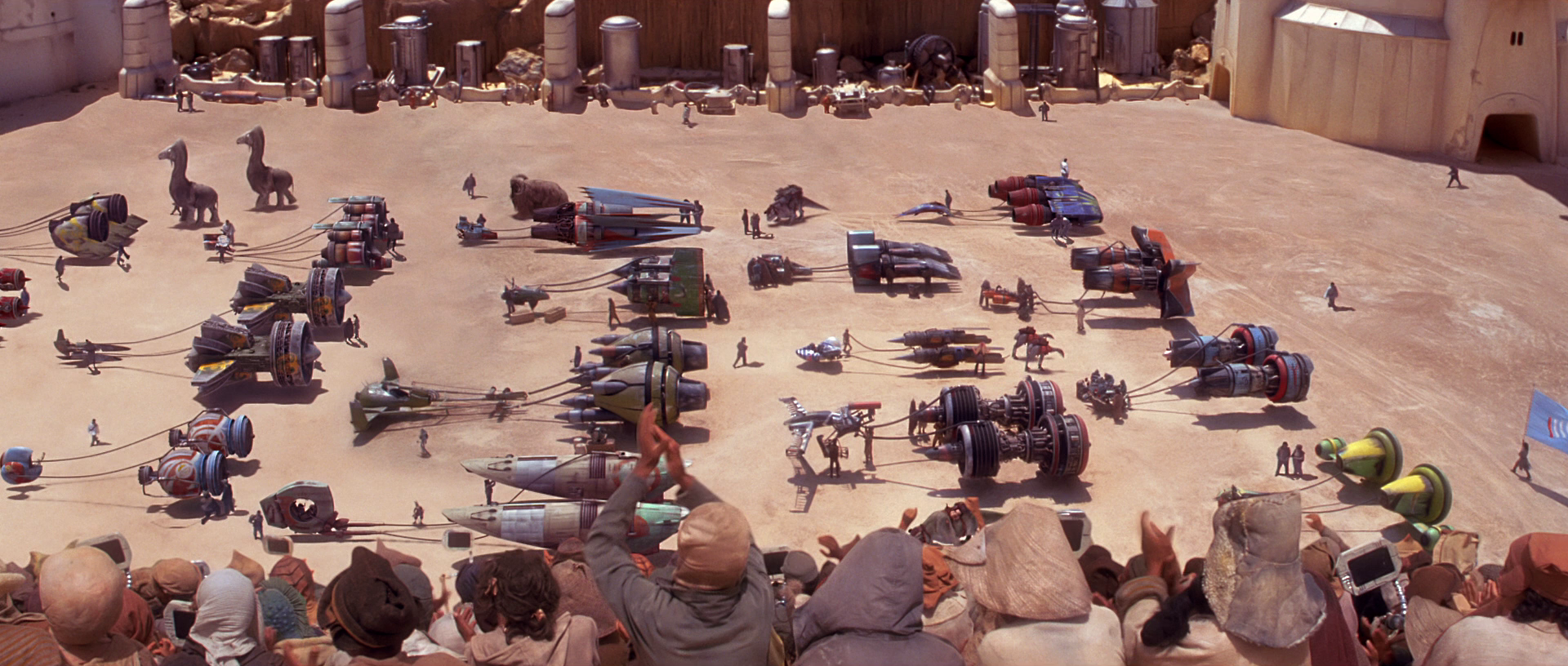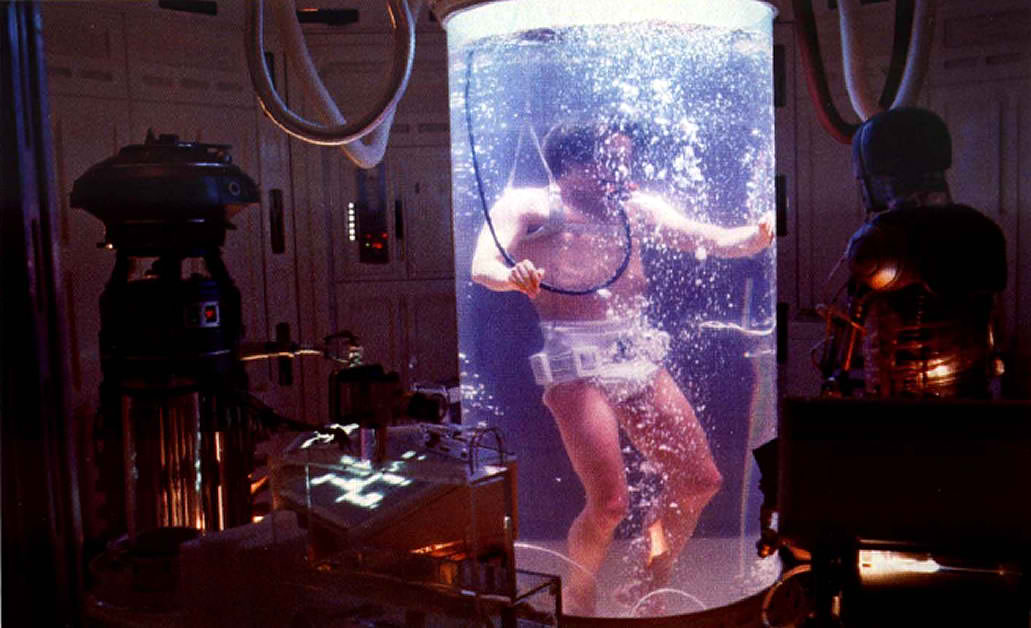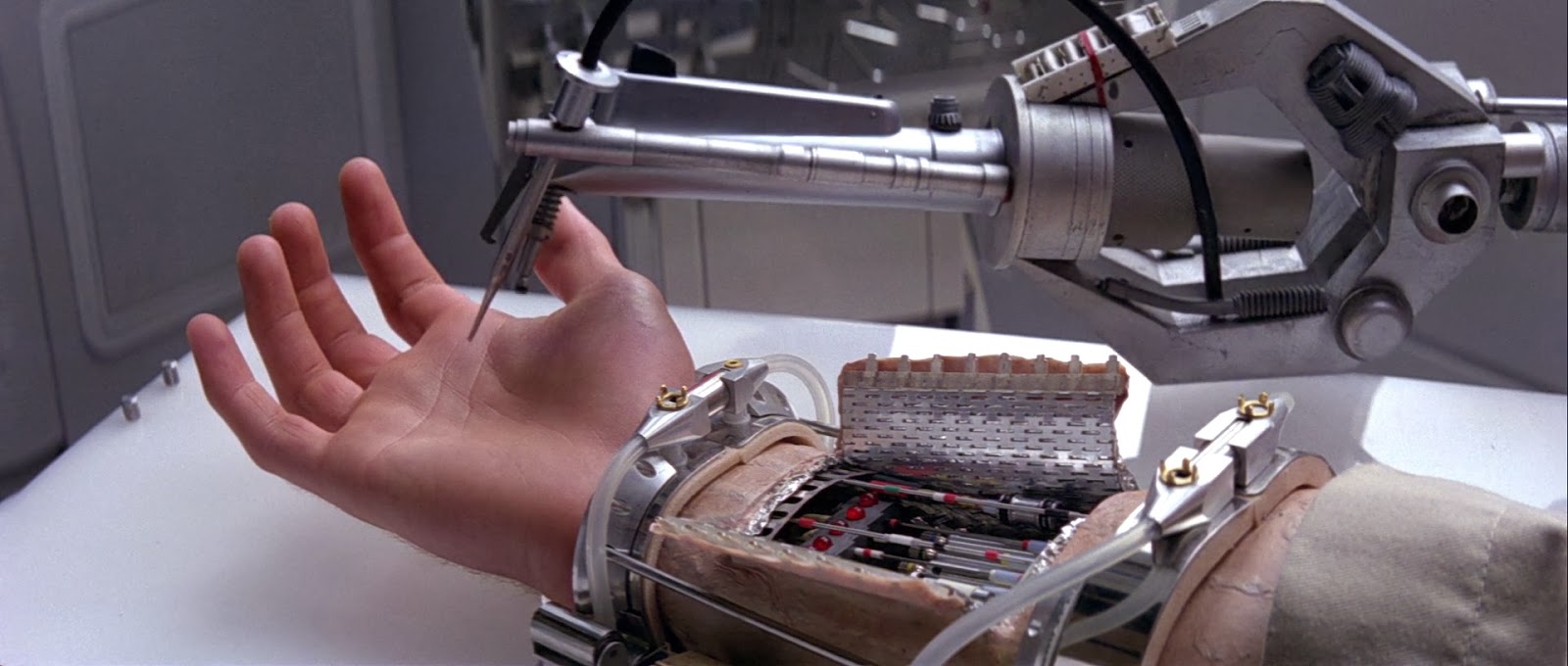
In Star Wars, even something as mundane as simply getting around is a visibly futuristic process. Cars are replaced with landspeeders that glide smoothly over even the roughest terrain without needing a single wheel to touch the nonexistent roads. Their governments must save a fortune on infrastructure upkeep. Skyhoppers and airspeeders are more like flying cars (or what flying cars would be like, if we had them) than planes, complete with being totaled by thrill-seeking young drivers.
A speeder bike is something like a motorcycle, only about a dozen times faster, with no wheels, and an even worse safety record when it comes to crashing headlong into inconvenient obstacles like trees. Crossing the great void between the stars to new worlds is as simple as booking passage on a vessel headed in the right direction, the galaxy’s denizens having long ago circumvented that troublesome little matter of the light barrier that’s been keeping us from our round trip to Alpha Centauri all these years.
With casual interstellar travel being so accessible to the general public, one can safely assume that travel time between cities or continents on the same world would be all but nonexistent in the vast majority of cases. War machines are regularly produced in bipedal and quadrupedal configurations and deployed to great effectiveness, despite the obvious limitations and weaknesses of the design. Clearly, someone has an extreme aversion to wheels and tank treads (to the disappointment of car chase enthusiasts everywhere).
It’s easy to dismiss these things as being nothing more than irrelevant bits of background information and lore; the means by which our heroes hop, skip, and jump between their interstellar adventures. Flavor for something that would be otherwise stale, of interest only to the most overzealous of pedants. In fact, nothing could be further from the truth.




